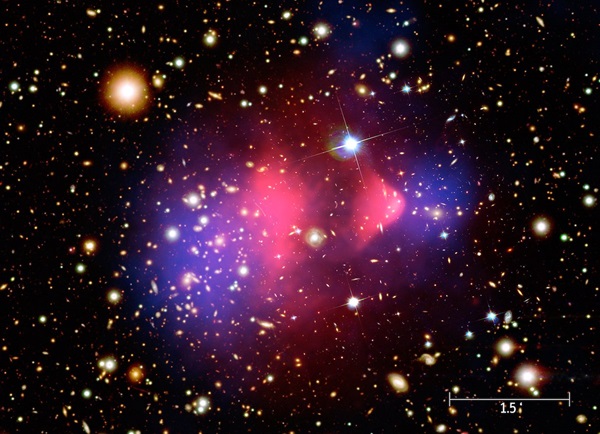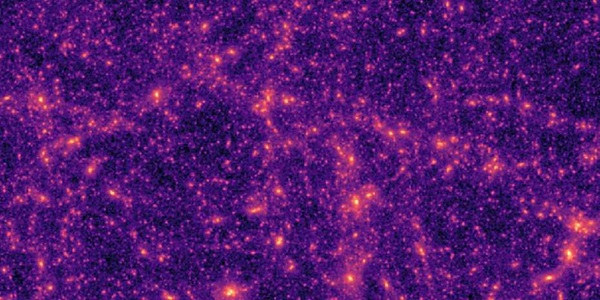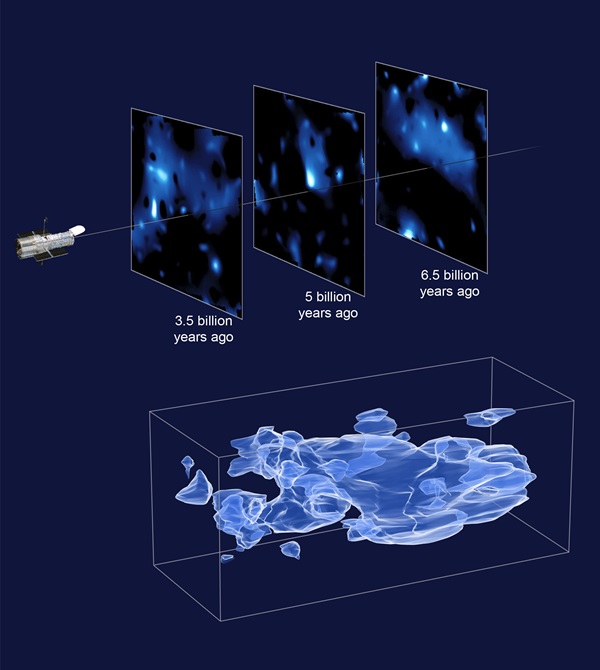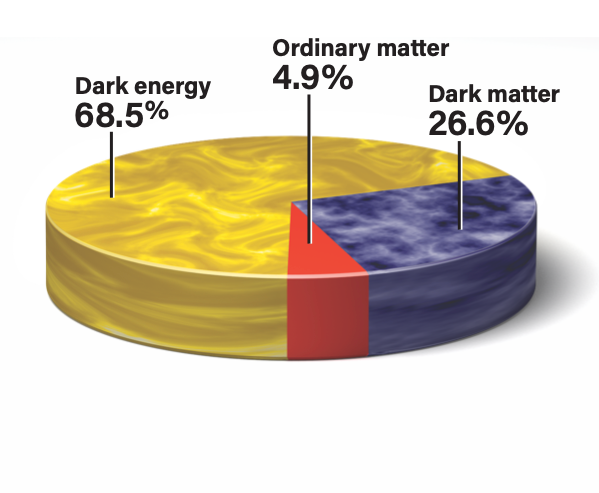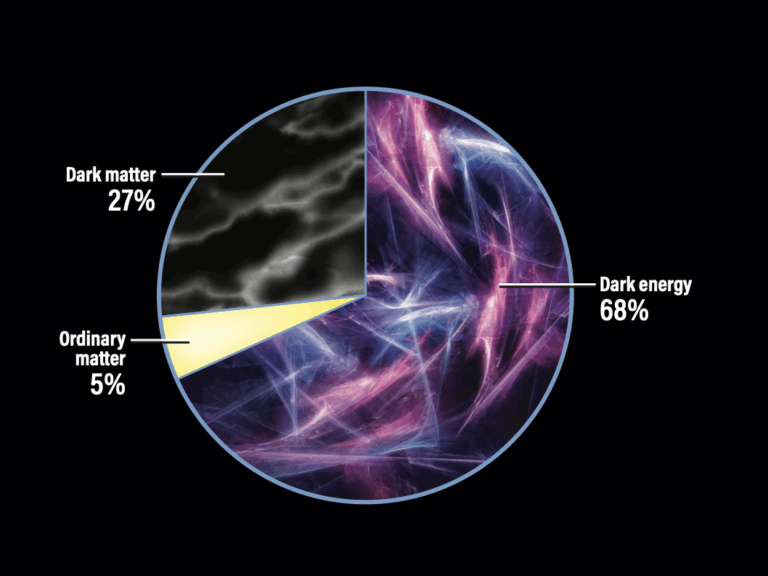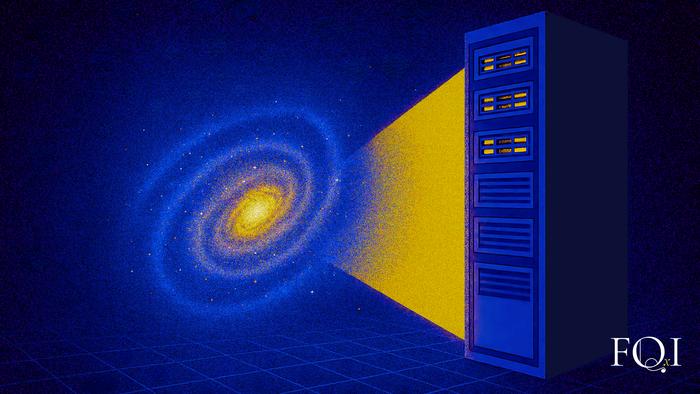Key Takeaways:
- Dark matter, constituting approximately 85% of the universe's total matter, is a non-luminous substance whose presence is inferred solely through its gravitational interactions, evidenced by phenomena such as anomalous galactic rotation and the dynamics of galaxy cluster collisions.
- Leading theoretical candidates for dark matter include weakly interacting massive particles (WIMPs), hypothetical sterile neutrinos, and featherweight axions, each distinguished by their proposed interaction properties and potential roles in addressing other fundamental physics problems.
- Previous hypotheses, such as massive astrophysical compact halo objects (MACHOs) and Modified Newtonian Dynamics (MOND) theories, have largely been disproven or are insufficient to explain the full range of observed dark matter effects.
- Despite the identification of primary suspects, the true nature of dark matter remains unknown, presenting a challenge where a complete understanding might be hampered if its only interaction with ordinary matter is gravitational.
The galaxy cluster 1E 0657-56, commonly known as the Bullet Cluster, is seen here in this composite image. Blue indicates dark matter, as determined by gravitational lensing observations, while pink denotes regular, visible matter. As two galaxies passed through one another, the regular matter from each galaxy interacted, causing a cosmic logjam in the center. Yet, the dark matter seems to have ghosted through the collision.
Over the centuries, our understanding of the cosmos has grown by leaps and bounds. But it wasn’t until relatively recently that astronomers discovered that around 85 percent of the matter in the universe takes on a bizarre, foreign form. And just like detectives in the best crime-thrillers, astronomers must hunt for this elusive dark matter by searching for subtle clues, sifting through convoluted evidence, and, critically, identifying likely suspects.
“Dark matter is the name scientists have given to the particles which we believe exist in the universe, but which we cannot directly see,” theoretical physicist Johar M. Ashfaque tells Astronomy. Ashfaque is now a data scientist at East Kent Hospitals University NHS Foundation Trust in the U.K., but he first became interested in the dark-matter mystery while earning a Ph.D. focused on string theory at the University of Liverpool.
“This material appears to have mass, but it does not appear to absorb or emit any electromagnetic radiation,” he explains. “Given the fact that it does not send us any light, it is not difficult to understand that it has been hard to discover anything about the nature of these mysterious particles.”
Yet, despite this, we aren’t completely blind when it comes to dark matter; scientists have been able to shed light on the problem. The majority of our knowledge about dark matter comes from the fact that, although it doesn’t interact with light, it does interact with gravity — that’s how we know it really exists.
Specifically, the gravity of regular (baryonic) matter locked up in galaxies’ stars, planets, and gas isn’t strong enough to bind those galaxies together as tightly as they are observed to be. Without dark matter, astronomers would see stars on the outskirts of the galaxies orbiting much slower than those orbiting near the center. Yet, starting with observations of the Andromeda galaxy made by Vera Rubin and Kent Ford in the late 1970s, that’s not what researchers found. Visible matter at the fringes of galaxies actually orbits faster than it should, suggesting galaxies contain an invisible form of non-baryonic matter that researchers have dubbed dark matter.
Astronomers’ meticulous identification of the indirect effects of dark matter is akin to gathering clues. And just as that process works for police or private detectives, making sense of these clues helps scientists identify the likely perpetrators.
Rounding up the usual suspects
Most of the probable candidates for dark matter may be hypothetical particles, but their theorized existence is still based on real evidence. And that evidence comes from many eyewitness accounts that astronomers have compiled over the years, helping them sketch out some possible mugshots.
The likely sources of dark matter divide into two rough categories: cold dark matter (CDM) and hot dark matter (HDM). The category names don’t refer to temperatures, though; instead, they refer to speed, with a ‘cold’ particle being one that is moving well below the speed of light.
One strong theoretical CDM candidate for dark matter is weakly interacting massive particles, or WIMPs. These hypothetical particles are dubbed “weak” because they only interact with themselves through two of the four fundamental forces: the weak nuclear force and gravity. In other words, WIMPs basically ignore other matter.
Joel Primack, a emeritus physics professor at the University of California, Santa Cruz, tells Astronomy that “Heinz Pagels and I were the first to point out in our 1982 article in Physical Review Letters that the lightest supersymmetric partner particle is a natural candidate to be dark matter . … And the lightest supersymmetric partner particle would be a WIMP.” But even if the profile fits, astronomers still need to catch WIMPs red-handed to prove they’re involved.
Though direct evidence for WIMPs as dark matter remains elusive, researchers have already found some indirect evidence. Namely, Primack says, “Gamma rays from the center of the Milky Way nicely fit the predictions of WIMP annihilation.” When two WIMPs come in contact with one another, they don’t just bounce off each other or pair up; they completely destroy one another in a powerful burst of energy. Yet, he adds, “there are other possible explanations [for the gamma rays].”
In addition to this potential line of evidence, when physicists run simulations of the early universe — much like detectives run crime scene reconstructions — they see WIMP ‘look-a-likes’ pop up and survive to the modern day. And their numbers even match the predicted abundances that are based on our current understanding of dark matter. Yet, by and large, WIMPs largely remain on the lamb, as astronomers can’t seem to directly connect them to dark matter.
Scientists, however, have had success detecting neutrinos, which are chargeless, virtually massless, ghost-like particles that fit the weakly-interacting criteria of WIMPs. But, because neutrinos are massless and travel at nearly the speed of light, they don’t fit into astrophysicists’ CDM model.
These factors haven’t ruled out neutrinos as HDM candidates, though. Some physicists have hypothesized that the various classes of known neutrinos have a much more massive cousin: the sterile neutrino. These particles would likewise only weakly interact with baryonic matter and ignore electromagnetic influence, but they could have enough mass to account for dark matter.
Despite their heft, sterile neutrinos still would be trickier to collar than common neutrinos, as the latter are produced in abundance by stars, including the Sun. But it’s hard to deny that sterile neutrinos could potentially be a dead ringer for dark matter.
And yet, not all possible dark matter suspects have to be heavyweights like WIMPS or sterile neutrinos.
Axions: The featherweights
Axions are considered to be similar to photons. But whereas photons are massless, axions would possess a tiny amount of mass, perhaps a billionth the mass of an electron.
Axions may be one of the most interesting candidates for dark matter due to the fact that their existence could simultaneously solve another troubling mystery in physics. They could potentially explain why the early universe seemed to favor matter over antimatter, despite the two initially having symmetry. As astrophysicists put it, axions could help resolve the ‘charge parity (CP) violation’ problem. And despite being exceptionally tiny and light, axions could legitimately account for dark matter, as long as they are packed incredibly tightly into the universe.
This temptation of killing two birds with one stone has only served to bolster theorists’ desire to add axions to the short list of possible dark matter suspects. “The axion is the best solution to preventing CP violation,” says Primack. Yet Primack also warns against settling for an answer out of convenience: “[Axions] could do that and still make no significant contribution to the dark matter density of the universe.”
Despite understandable caution, Primack still thinks axions and WIMPs are currently the prime suspects for dark matter. “Axions and supersymmetric WIMPs remain the two candidates that are motivated by non-cosmological arguments,” he says, “and they have the virtue that they interact with ordinary particles and are thus detectable.”
Don’t leave town…
Some potential dark matter candidates aren’t hypothetical, though, or even too strange. And just like detectives clear suspects with strong alibis, astronomers and physicists have likewise cleared a number of possible dark matter candidates.
One example: massive astrophysical compact halo objects (MACHOs), which would include the remnants of dead stars, such as white dwarfs and neutron stars, as well as failed stars like brown dwarfs. These bodies are still composed of baryonic matter. So, although that matter might be exotic by Earth standards, it would still interact with the fundamental forces in predictable ways. The only reason we can’t see MACHOs is that their light-producing processes have ceased (or never even started), so they don’t emit electromagnetic radiation.
MACHOs, however, have been pretty much ruled out as the source of dark matter, as the mass currently calculated to be locked up in these objects isn’t sufficient to account for dark matter’s observed gravitational effects. Thus, if dark matter was actually comprised of MACHOs, they would need to be much more prevalent than astronomers currently estimate.
Another theory that has moved out of favor over the years posits that dark matter may not exist at all. Instead, so-called MOdified Newtonian Dynamics (MOND) theories suggest that dark matter is a mere cosmic illusion, resulting from our flawed understanding of how gravity works on the grandest scales.
MOND theories have thus far faltered because, while they can account for many dark matter related phenomena (when perfectly tuned), they can’t explain all of the observed effects of dark matter. Thus, even by modifying our well-tested theories of gravity, astrophysicists would still be missing some major piece of the dark-matter puzzle — another co-conspirator, if you will.
“None of the attempts to [explain the effects of dark matter] without dark matter, such as MOND, have succeeded,” Primack says. “At best, they explain a small fraction of the observational data.” In other words, MONDs and MACHOs seem to be off the hook.
The dark matter mystery may not yet be solved, but intrepid cosmic sleuths have compiled mugshots of the likely suspects. And now, it seems it’s simply a matter of time before they point the finger at the right culprit. Of course, there remains the outside possibility that true explanation for dark matter could be something scientists have yet to dream up. And in that case, 85 percent of the mass in the universe might remain incomprehensible for years to come.
“The nightmare about dark matter is that it might be a kind of particle that doesn’t interact even weakly with ordinary matter, except by gravity,” Primack says. And that, he adds, “would make it undetectable.”
In other words, dark matter might have carried out the perfect cosmic crime.

